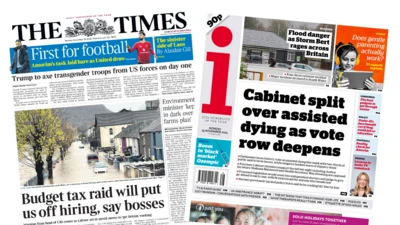We've updated our Privacy and Cookies Policy
We've made some important changes to our Privacy and Cookies Policy and we want you to know what this means for you and your data.
High Streets see revival of weekend shopping
Image source, Getty Images
- Author, Beth Timmins
- Role, Business reporter, ґуПуґ«ГЅ News
Weekend shopping is seeing a revival as more people return to working in offices during the week, according to a UK retail group.
The number of shoppers visiting stores at the weekend rose 9.7% in March from a year earlier, the British Retail Consortium (BRC) said.
However, the BRC said footfall remained below pre-pandemic levels, and the recent recovery in numbers had slowed.
Households' finances are still being squeezed by soaring prices.
Inflation - the rate at which prices rise - jumped to 10.4% in the year to February, close to a 40-year high.
The overall number of shoppers visiting stores is still down 10.2% from pre-pandemic levels, the BRC said, with consumers and businesses facing a "challenging economic environment".
However, the ongoing return to the office has caused many people to "refocus their shopping trips back to the weekend", BRC chief executive Helen Dickinson said.
Total UK footfall rose by 6.8% in March from a year earlier, but that marked a slowdown from the trend seen during the previous three months.
Andy Sumpter, retail consultant for analytics firm Sensormatic Solutions, who worked with the BRC to collect the data, said the rise in shopper numbers was "no small feat" given cost of living pressures, high inflation and strike disruptions.
"While the retail footfall recovery slowed marginally last month compared to pre-pandemic levels, we continue to see shopper numbers continue to normalise and the ebbs and flows in performance are becoming less pronounced," he added.
The number of people visiting retail parks fell, the BRC found, which Mr Sumpter said was down to households avoiding higher priced purchases, such as furniture, kitchen items and beds.
Rising prices of many essential goods - such as food and energy - have increased pressure on households' budgets.
The latest inflation figures found that food prices in February rose at their fastest rate in 45 years with salad and vegetable shortages helping to push food inflation to 18.2%.
Top Stories
More to explore
Most read
Content is not available








